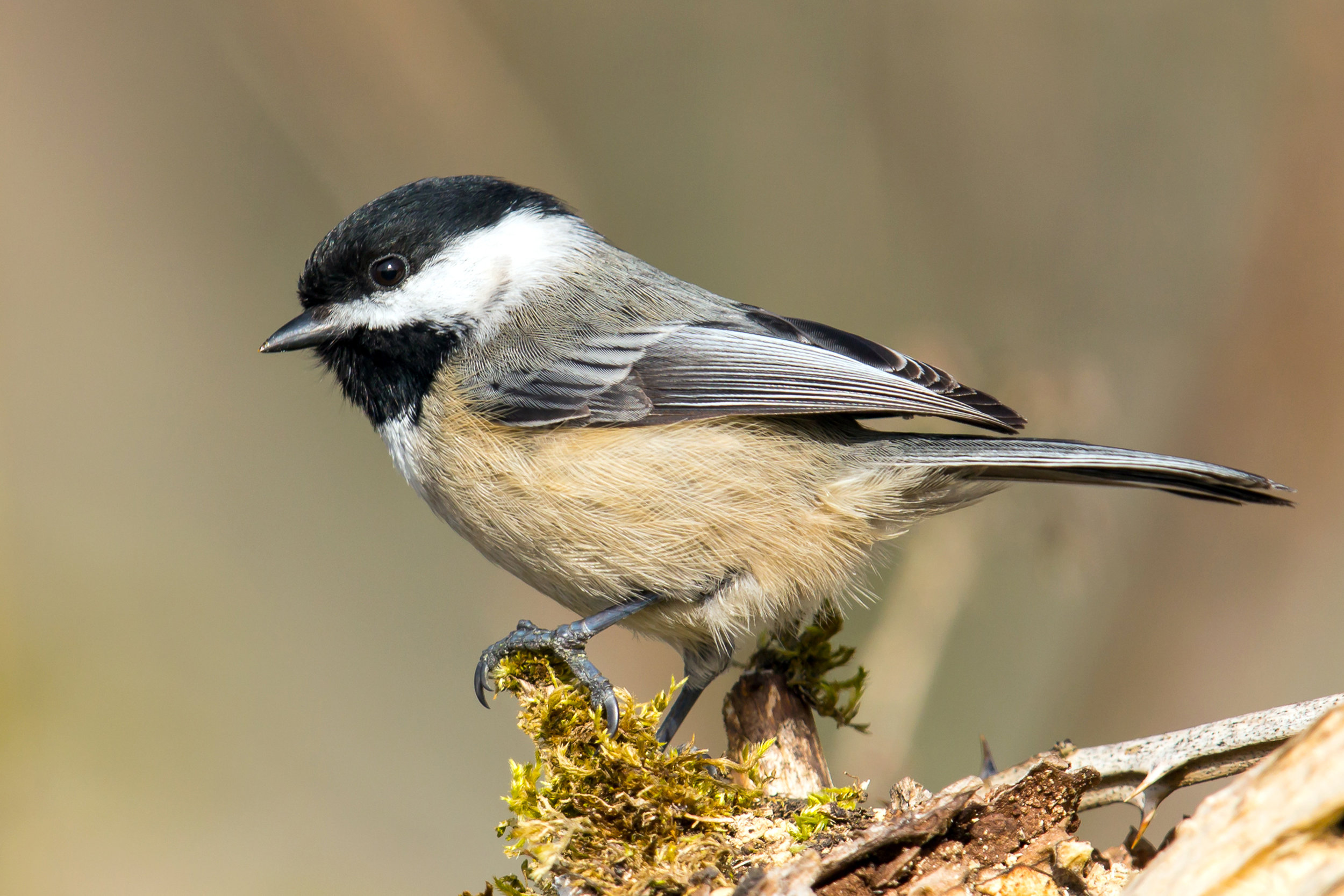Bird of the Month: Black-Capped Chickadee
By Andy McCormick
PC: Mick Thompson (Black-Capped Chickadee)
Scientific Name: Poecile atricapilla
Length 5.25 in
Wingspan 8 in
Weight: 0.39 oz
AOU Band code BCCH
The Black-capped Chickadee is the most common and widespread of the chickadees and is easily identified by the average person. They are common at backyard feeders in winter and prefer deciduous or mixed woodlands. Its namesake chick-a-dee-dee-dee call is used in many different contexts such as making contact or as an alarm call. The fee-bee song is more common in spring and used to mark territories and attract mates. The Black-capped is one of 15 worldwide species in the genus Poecile from the Greek poikilos, spotted, pied, or dappled. Seven of the species are found in North America. The species name atricapilla, from ater, black, and capillus, hair of the head, refers to the black crown.
The bird has a black cap, white cheek, black bib, gray back and buffy or pale pink sides. In fall and winter when “fresh,” flight feathers and tail are trimmed in white. Worn summer birds show less white in the wings and tail. Two other chickadees closely resemble the Black-capped. Mountain Chickadees P. gambeli are distinguished by a white eye stripe, and Carolina Chickadees P. carolinensis have less white in the wings and are gray on the sides.
The Black-capped Chickadee has been well-studied and is known to have a strong linear hierarchy. Old birds are dominant to young ones, and males are dominant to females. High-ranking males have larger territories and eat more. They are preferred by females both as social breeding partners and for extra-pair copulation (Foote, et al). “Dominant pairs have larger clutches, greater hatching success, and greater nest survival” (Foote, et al). Unattached birds or floaters will join winter flocks and rank below birds of the same sex. They may insert themselves into a pair bond when a higher ranking bird disappears.
The hierarchical pattern of the Black-capped Chickadee extends to other species in mixed flocks containing nuthatches, titmice, woodpeckers, warblers, and kinglets. These species will respond to chickadee alarm calls and chickadees provide flock cohesion and lead flock movements (Foote, et al). It appears that other species such as nuthatches and juncos can learn chickadee feeding habits at feeders.
Black-capped chickadees do not migrate and can survive winters by dropping their body temperature into a regulated hypothermia on cold winter nights (Foote et al). In some seasons with poor food they may erupt southward for brief periods of time. They nest in tree hollows such as old woodpecker holes and breed very early in the spring. Both sexes will enlarge the hole and line it with animal fur and moss. Eggs are white with reddish brown dots on the large end. The female incubates 6-8 eggs for less than two weeks and is fed by the male during this time. The young leave the nest in about 16 days (Kaufman). Populations of Black-capped Chickadees are stable, however, flocks in the central U. S have been negatively impacted by West Nile Virus.


